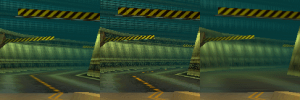EngineLoadTXD: Difference between revisions
Dutchman101 (talk | contribs) (Added code example and lifted it up in sequence due to how typical the usage scenario is (more than previous example #2)) |
No edit summary |
||
| (8 intermediate revisions by 5 users not shown) | |||
| Line 1: | Line 1: | ||
{{Client function}} | {{Client function}} | ||
__NOTOC__ | __NOTOC__{{Note|Please note the loading order that is used in the example as other orders can cause collisions, textures or the DFF not to load due to technical limitations}} | ||
{{Note | |||
This function loads a RenderWare Texture Dictionary (TXD) file into GTA. The texture dictionary can then be used to provide textures. | This function loads a RenderWare Texture Dictionary (TXD) file into GTA. The texture dictionary can then be used to provide textures. | ||
| Line 26: | Line 25: | ||
==Example== | ==Example== | ||
See [https://wiki.multitheftauto.com/wiki/EngineReplaceModel#Example unified example available in engineReplaceModel.] | |||
==Changelog== | ==Changelog== | ||
Latest revision as of 15:03, 1 May 2024
This function loads a RenderWare Texture Dictionary (TXD) file into GTA. The texture dictionary can then be used to provide textures.
This is a client side function. Be sure to transfer your TXD file by including it in the meta file.
| Tip: Do your TXD files take megabytes of disk space? You can read some tips on reducing the size of TXD files to compress them without ruining texture quality. |
Syntax
txd engineLoadTXD ( string txd_file / string raw_data [, bool filteringEnabled = true ] )
OOP Syntax Help! I don't understand this!
- Method: EngineTXD(...)
Required Arguments
- txd_file / raw_data: The filepath to the TXD file you want to load or whole data buffer of the TXD file.
Optional Arguments
- filteringEnabled: Whether to enable texture filtering.
Returns
Returns a TXD if the file was loaded, false otherwise.
Remarks
The filteringEnabled property overrides the filtering modes in each texture of the TXD with point filtering. It also sets the uAddressing and vAddressing to WRAP. If textures come with mipmaps then they are disabled which is especially visible without anisotropic filtering. It is recommended to set filteringEnabled to false if the TXD was created with mipmaps (the filtering mode can be changed in a TXD editor).
Example
See unified example available in engineReplaceModel.
Changelog
| Version | Description |
|---|
| 1.4.1-9.07088 | Added option to use raw data instead of a file name |
See Also
- engineAddImage
- engineApplyShaderToWorldTexture
- engineFreeModel
- engineGetModelFlags
- engineGetModelIDFromName
- engineGetModelLODDistance
- engineGetModelNameFromID
- engineGetModelPhysicalPropertiesGroup
- engineGetModelTextureNames
- engineGetModelTextures
- engineGetModelTXDID
- engineGetModelVisibleTime
- engineGetObjectGroupPhysicalProperty
- engineGetSurfaceProperties
- engineGetVisibleTextureNames
- engineImageGetFilesCount
- engineImageGetFiles
- engineImageGetFile
- engineImageLinkDFF
- engineImageLinkTXD
- engineImportTXD
- engineLoadCOL
- engineLoadDFF
- engineLoadIMG
- engineLoadIFP
- engineLoadTXD
- engineRemoveImage
- engineRemoveShaderFromWorldTexture
- engineReplaceAnimation
- engineReplaceCOL
- engineReplaceModel
- engineRequestModel
- engineResetModelFlags
- engineResetModelLODDistance
- engineResetSurfaceProperties
- engineRestoreAnimation
- engineRestoreCOL
- engineRestoreDFFImage
- engineRestoreModel
- engineRestoreModelPhysicalPropertiesGroup
- engineRestoreObjectGroupPhysicalProperties
- engineRestoreTXDImage
- engineRestreamWorld
- engineSetAsynchronousLoading
- engineSetModelFlag
- engineSetModelFlags
- engineSetModelLODDistance
- engineSetModelPhysicalPropertiesGroup
- engineSetModelVisibleTime
- engineSetObjectGroupPhysicalProperty
- engineSetSurfaceProperties
- engineStreamingFreeUpMemory
- engineStreamingGetUsedMemory

